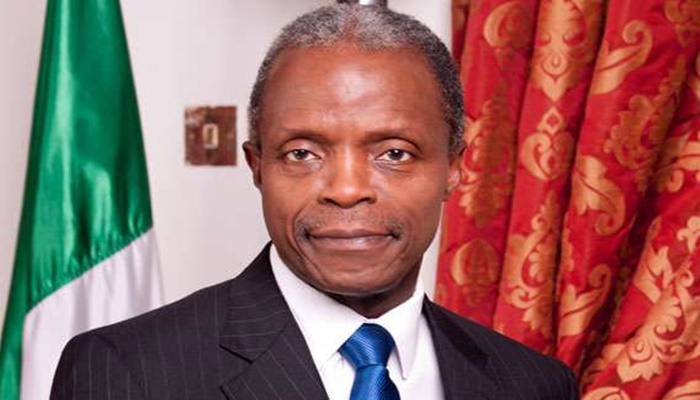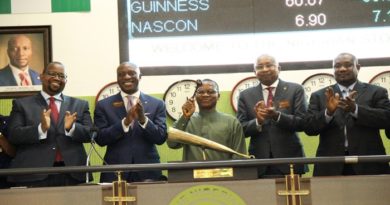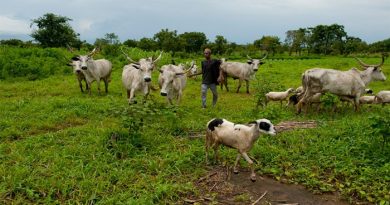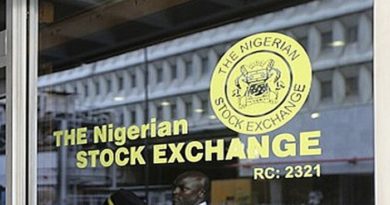Overall 2016 GDP figures show growth in agric
- As FG’s efforts set economy on an upward trajectory
There are now indications that the Nigerian economy is well on its way out of recession considering the 2016 overall and last quarter Gross Domestic Product reports.
A review of the recent GDP figures released today by the National Bureau of Statistics, NBS, show a contraction of -1.30% in the fourth quarter of 2016, translating into an estimated economic growth rate of -1.51% for the full year.
Besides, the Nigerian economy actually performed better overall last year as the growth rate was higher with a contraction at -1.5% than the -1.8% predicted by the IMF, raising the hope that the recession may have buttomed out with the improving trends in several key sectors of the economy including agriculture and mining.
The Buhari administration is also hopeful that with the ongoing series of engagement with the oil-producing communities of the Niger Delta, the increased oil production output would be sustained.
In a similar vein, the ongoing implementation of the Social Investment Programmes, the significant infrastructural spending of the Federal Government, and a possible early legislative passage of the 2017 budget are all expected to spur a positive multiplier effect on the Nigerian economy.
The Buhari administration will not relent in its determined effort and it’s comprehensive approach to bring about the full recovery of the Nigerian economy and set it on a solid path of sustainable growth. Our work continues and we renew the pledge to do it with diligence, and the firm commitment it deserves.
*Below is the statement by the Presidential Adviser on Economic Matters, Dr. Adeyemi Dipeolu, on the 4th Quarter 2016 Nigerian Gross Domestic Product Report issued by the National Bureau of Statistics (NBS).
“The recently released data from the National Bureau of Statistics showed that Gross Domestic Product (GDP) contracted by -1.30% in the fourth quarter of 2016. This translated into an estimated growth rate of -1.51% for the full year 2016. These figures reflect the slow-down in the economy for most of 2016 but also show that the recession may have bottomed out because of an improving trend in several key sectors.
Although the oil sector declined by -12.38% on a year on year basis, this was a relative improvement compared to the third quarter when the decline amounted to -22.01%. This outcome was due mainly to increases in production such that the quarter on quarter growth for the oil sector between the third and fourth quarters was 8.07%. The non-oil sector however declined by 0.33% after showing some resilience in the third quarter when it grew by 0.03% at the height of the recession.
Agriculture grew at 4.03% in the fourth quarter of 2016 which was a marginal decrease from the 4.54% growth in the third quarter. This is mainly because agriculture (especially crop production, which accounts for the bulk of agricultural production) is highly seasonal, with growth in the third quarter of the year usually higher than the others. Nevertheless, the overall outcome for the year was that the agricultural sector grew by 4.11% for the whole of 2016 which was higher than the figure of 3.72% for 2015.
The manufacturing sector actually grew on a quarter on quarter basis by 1.89% but declined over the year by 4.32% reflecting the problems that the sector faced in the course of the year due to a combination of factors including the depreciation in the exchange rate and higher energy costs. The metal ores sub-sector grew by 7.03% in Q4 of 2016 as compared to 6.93% in the last quarter of 2015, thus justifying the priority that the Federal Government continues to give to solid minerals.
The services sector, which accounted for 53.55% of GDP in 2016, experienced a decline in growth by -0.82% over the year as compared to a growth of 4.78% in 2015. This slowdown in the services sector arose from generally fragile economic conditions. This is because its fortunes depend to a large extent on consumer spending and government expenditure which were both adversely affected by difficult economic conditions.
Nevertheless, the Social Investment Programme of the Federal Government and the relatively high level of infrastructural spending in late 2016 as well as 2017 capital spending plans should begin to have a multiplier effect on the economy.
The trend in nearly all the sectors showed a growth improvement in nominal terms although such effects were outweighed by inflationary factors. The expectation is that this trend and the slowing down of month-on-month inflation will enable an early return to positive growth in the economy. This positive trajectory will also receive a boost from the positive news emerging from other parts of the economy.
Notable in this regard is the release of the Economic Recovery and Growth Plan by the Federal Executive Council which sets the stage for further fast-tracking of recovery and economic diversification.
In the same vein, the likely early passage of the 2017 budget estimates would also lend further momentum to economic growth. Similarly, the recent bond issue of US$1 billion which was subscribed by almost 8 times will reinforce the trend of increasing reserves. Indeed, foreign reserves rose from $23.9 billion in October 2016 to $27.8 billion in January 2017.
Furthermore, there is a better outlook for revenues from the petroleum sector with revenues set to increase with oil production now over 2m barrels per day while oil prices holding relatively steady at an average of about $55 per barrel.
This improved outlook for the oil and gas sector is closely linked to the on-going engagement and dialogue between the Federal Government and various communities in the Niger Delta.
Overall, the Nigerian economy performed better than expected even though we are still in the early stages of recovery. It is indeed noteworthy that overall 2016 growth was higher with a contraction at -1.5% than the -1.8% predicted by the IMF.”




